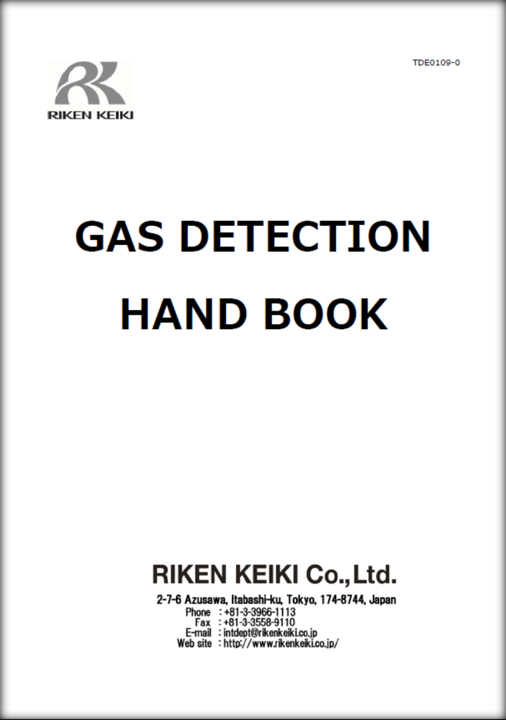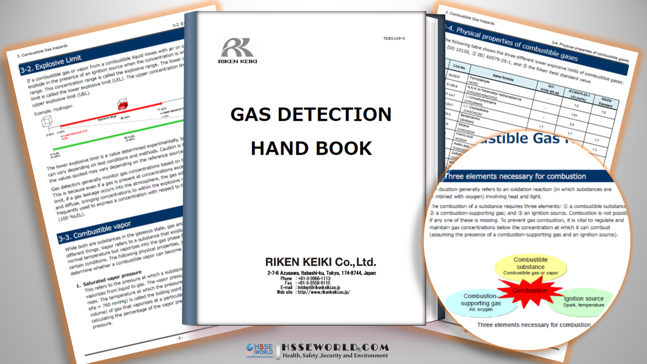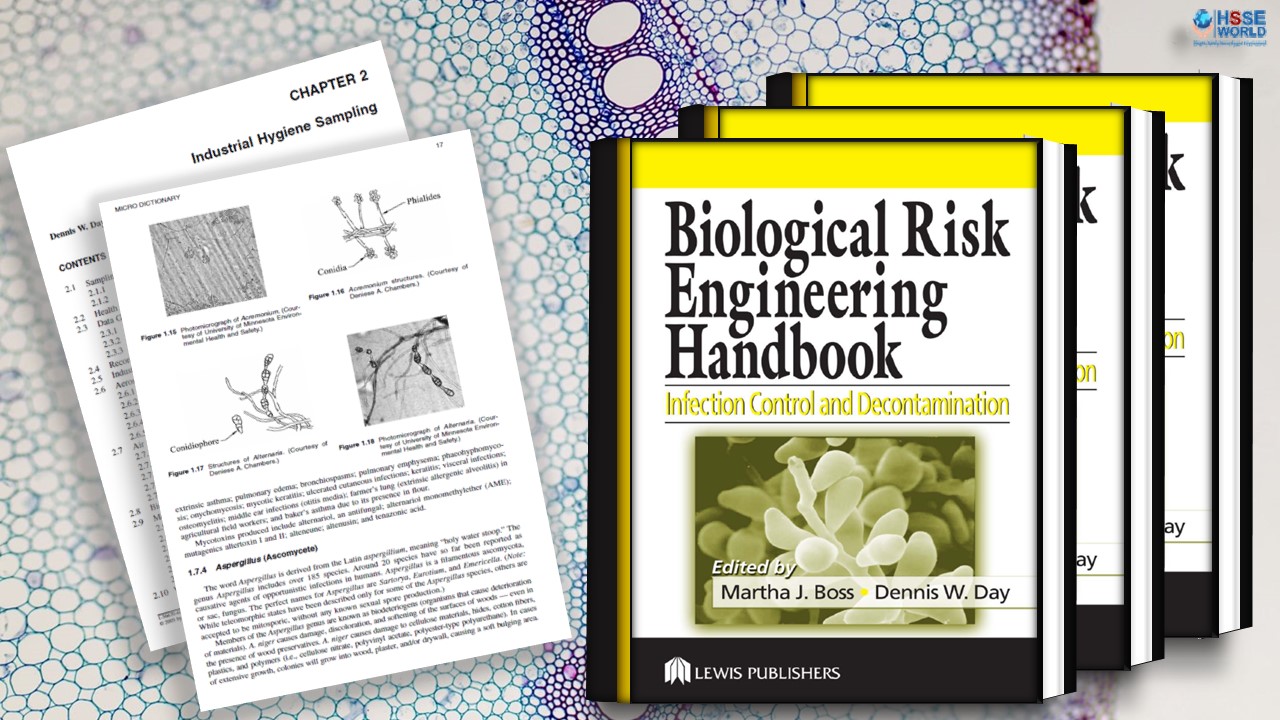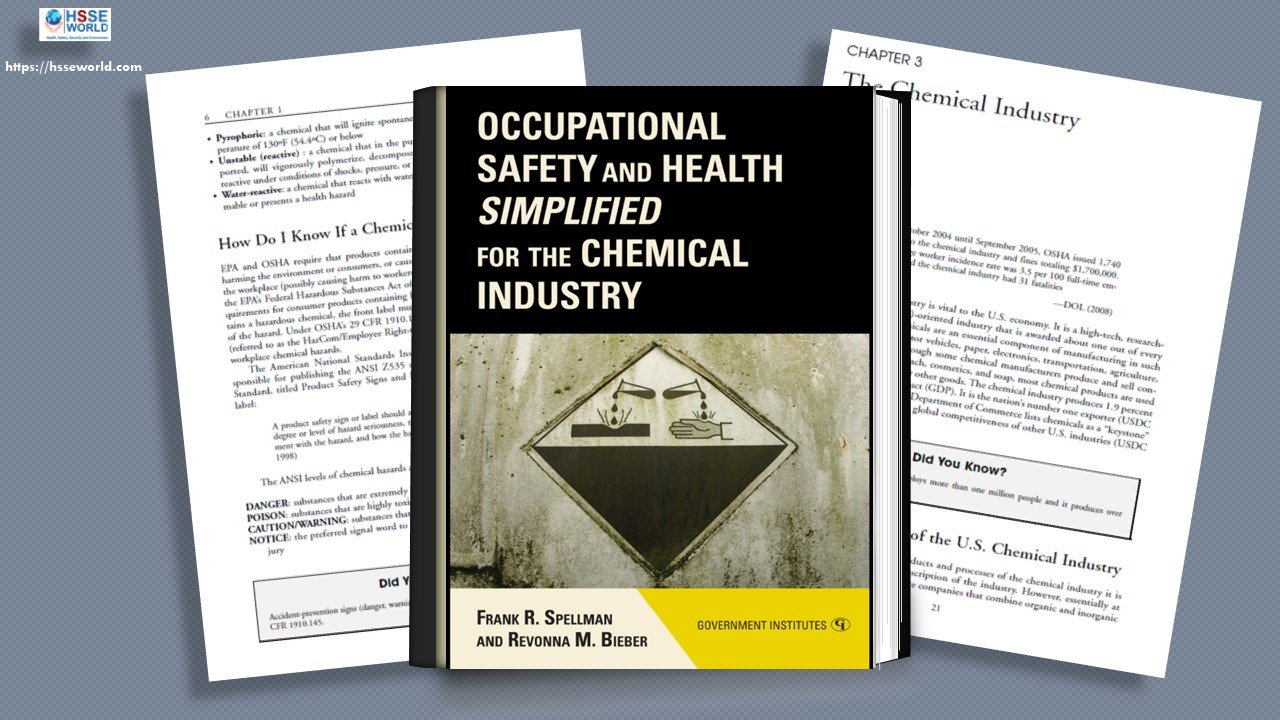Gas Detection Handbook is a reference guide for customers considering using fixed or portable gas detectors. It provides both basic and comprehensive
information about gas detection.
Gas detectors and environmental monitoring devices protect people from invisible hazards by swiftly detecting combustible and toxic gases that can cause disasters. Above all, our mission is to create an environment that allows people to work with peace of mind̶something essential for industrial growth and development.
What is gas?
Air composition
Air consists of approximately 78 % nitrogen, 21 % oxygen, and 1 % other gases (e.g., argon and carbon dioxide). Nitrogen, the largest component of air, forms the basis of proteins made of amino acids and contained in numerous living organisms. Nitrogen is essential for almost all life on the planet. However, nitrogen is not absorbed directly into the body from the air. ( The basics of alarm in the Process Plant )
The nitrogen we breathe in is simply expelled when we breathe out. Essential to life and absorbed directly into our bodies, oxygen accounts for 21 % of air. Carbon dioxide, which is vital for plant photosynthesis, accounts for less than 1 %. Animals absorb oxygen and expel carbon dioxide and plants absorb carbon dioxide and
expel oxygen, maintaining a constant balance of the overall air composition and life processes on the planet.
( Read more:Gas Leak Detection System )

Gas hazards
Broadly speaking, gas hazards fall into the following three categories:
① Combustible gases
Gases that have an explosive range (combustible range) when mixed with air.
The GHS* refers to substances in a gaseous state at standard atmospheric pressure (101.3 kPa) and 20 °C.

② Toxic gases
Gases that impair human biological function Toxic gases are regulated based on threshold values set to safeguard against harmful health effects for workers exposed to such substances at the work site eight hours a day, 40 hours a week. ( What is the Meaning of %LEL, %UEL, PID )
② Oxygen deficiency
The human body is able to function normally at atmospheric oxygen concentrations of around 21 %. If oxygen is consumed and its concentrations are reduced (by metal oxidation or by microorganisms) or if oxygen is displaced by other gases (e.g., N2 and Ar), effects on the human body become apparent when concentrations fall below around 18 %. Death becomes a risk between 6 % and 8 %.
Know more about Carbon dioxide
Contents
The content of Gas Detection Hand Book:
- 1- Introduction ……………………………………………………………………………………………………………………………. 4
- 2- What is gas? …………………………………………………………………………………………………………………………… 5
- 2-1. Air composition ………………………………………………………………………………………………………………….. 5
- 2-2. Gas hazards ……………………………………………………………………………………………………………………….. 6
- 3- Combustible Gas Hazards ………………………………………………………………………………………………………. 7
- 3-1. Three elements necessary for combustion ………………………………………………………………………… 7
- 3-2. Explosive Limit …………………………………………………………………………………………………………………… 8
- 3-3. Combustible vapor ……………………………………………………………………………………………………………… 8
- 3-4. Physical properties of combustible gases ………………………………………………………………………….. 10
- 4- Toxic Gas Hazards ………………………………………………………………………………………………………………… 32
- 4-1. Toxic gas hazards ……………………………………………………………………………………………………………… 32
- 4-2. Threshold limit values of toxic gases ………………………………………………………………………………… 33
- 5- Oxygen Deficiency Hazards …………………………………………………………………………………………………. 39
- 5-1. Oxygen deficiency …………………………………………………………………………………………………………….. 39
- 6- Typical Areas That Require Gas Detection ………………………………………………………………………….. 41
- 6-1. Gas detector market …………………………………………………………………………………………………………. 41
- 7- Gas detection technologies ………………………………………………………………………………………………….. 45
- 7-1. RIKEN Gas sensor technologies ………………………………………………………………………………………… 45
- 7-2. Catalytic Combustion Method ……………………………………………………………………………………………. 46
- 7-3. New Ceramic Catalytic Method …………………………………………………………………………………………. 47
- 7-4. Semi-Conductor Method ……………………………………………………………………………………………………. 48
- 7-5. Hot Wire Type Semi-Conductor Method ……………………………………………………………………………. 49
- 7-6. Thermal Conductivity Method …………………………………………………………………………………………… 50
- 7-7. Potentiostatic Electrolysis Method ……………………………………………………………………………………. 51
- 7-8. Membrane-Separated Electrode Method …………………………………………………………………………… 52
- 7-9. Membrane Type Galvanic Cell Method ………………………………………………………………………………. 53
- 7-10. Non-Dispersive Infrared Method……………………………………………………………………………………… 54
- 7-11. Interferometer Method ……………………………………………………………………………………………………. 55
- 7-12. Chemical Tape Method ……………………………………………………………………………………………………. 56
- 7-13. Photo-Ionization Detector ……………………………………………………………………………………………….. 57
- 7-14. Pyrolysis-Particle Detection Method ………………………………………………………………………………… 58
- 8- Selecting Gas Detectors ……………………………………………………………………………………………………….. 59
- 8-1. Gas detector selection ………………………………………………………………………………………………………. 59
- 9- Fixed Gas Detectors ………………………………………………………………………………………………………………. 61
- 9-1. Explosion-proof Gas Detector Head ………………………………………………………………………………….. 61
- 9-2. Non-Explosion-proof Gas Detector Head …………………………………………………………………………… 65
- 9-3. Indicator/alarm unit ………………………………………………………………………………………………………….. 67
- 10- Portable Gas Detectors ………………………………………………………………………………………………………. 69
- 10-1. Multi Gas Detector (Multi-sensor) …………………………………………………………………………………… 69
- 10-2. Single Gas Detector (Single-sensor) ……………………………………………………………………………….. 72
- 11-Typical Applications for Portable Gas Detectors ……………………………………………………………… 75
- 11-1. Applications in Automotive Market ………………………………………………………………………………….. 75
- 11-2. Applications in Steel Market ……………………………………………………………………………………………. 81
- 11-3. Applications in Fumigation Market ………………………………………………………………………………….. 85
- 11-4. Applications in Pharmaceutical Market ……………………………………………………………………………. 89
- 11-5. Applications in Food Product …………………………………………………………………………………………… 94
- 11-6. Applications at Universities and Research Institutions ………………………………………………….. 102
- 11-7. Applications in Gas Market…………………………………………………………………………………………….. 108
- 11-8. Applications in Electric Power Market ……………………………………………………………………………. 112
- 11-9. Applications in Paper Manufacturing Market …………………………………………………………………. 122
- 11-10. Applications in Oil and Fossil Fuel Market ……………………………………………………………………. 127
- 12- Standards and Certification ……………………………………………………………………………………………… 134
- 12-1. ATEX …………………………………………………………………………………………………………………………….. 134
- 12-2. IECEx ……………………………………………………………………………………………………………………………. 135
- 13- Product Ingress Protection Rating ………………………………………………………………………………….. 137
- 14- Maintenance ……………………………………………………………………………………………………………….
Download the book
E-Books: Gas Detection Hand Book
More Downloads
- E-Books: Healthcare Hazard Control & Safety Management
- E-Books: Safety, Health and Working Conditions Training Manual
- E-Books: Energy Efficiency in Water and Wastewater Facilities
- E-Books: Fire Service Features of Buildings and Fire Protection Systems
- E-Books: Evaluation of Fire Safety free download
- E-Books: PPE for Chemical, Biological, and Radiological Hazards free
- E-Books: Changing the Workplace Safety Culture free download
- E-Books: Site Emergency Planning Workbook
- E-Books: Load Restraint Guide
- E-Books: Essential Practices for Creating, Strengthening, and Sustaining Process Safety Culture
- E-Books: System Safety Engineering and Risk Assessment
- E-Books: Permit-Required Confined Spaces
- E-Books: Is it Safe to Enter Confined Space?
- E-Books: 5-Minute Workplace Safety Talks
- E-Books: Safety Culture and High-Risk Environments
- E-Books: Practical Guide to Industrial Safety
- E-Books: Slip, Trip, and Fall Prevention for Healthcare Workers
- E-Books: Health and Safety at Work Key Terms
- E-Books: Fundamentals of Process Safety Engineering
- E-Books: Gas Detection Hand Book
- E-Books: Occupational health and safety management systems ANSI-AIHA-z10-2012
- E-Books: Hot Work on Drums and Tanks
- E-Books: Human Fatigue Risk Management
- E-Books: Guidelines for the provision of facilities and general safety in the construction industry
- E-Books: Handbook of Training in Mine Rescue and Recovery Operations ( 2021)
- E-Books: Code of Practice for the Safe Use of Lifting Equipment – Edition 9 (Nov 2019)
- E-Books: Free Forklift Health and Safety Best Practices Guideline
- E-Books: Handbook of Hazardous Chemical Properties
- E-Books: Human Performance Improvement through Human Error Prevention
- E-Books: Principles Of Fire Risk Assessment In Buildings
- E-Books: Investigation of Occupational Accidents and Diseases
- E-Books: Radiation Protection and Safety in Industrial Radiography
- E-Books: Basic Guide to System Safety, Third Edition
- E-Books: Food Safety Management-A Practical Guide for the Food Industry
- E-Books: Safety identification: Escape and evacuation plan signs- ISO 23601
- E-Books: Safety at Work
- E-Books: The Safety-Critical Systems Handbook 4th edition
- E-Books: Fundamental principles of occupational health and safety
- E-Books: Fire Safety Risk assessment Guide – Sleeping Accommodation
- E-Books: Mental health at work series
- E-Books: Live Fire Training: Principles and Practice
- E-Books: Pre-Startup Safety Review Guide
- E-Books: Fire and Emergency Drill Manual and Building Inspection Guide
- E-Books: Health and Safety: Risk Management 5th edition
- E-Books: Fire Protection systems -Third edition 2021
- E-Books: Fire Safety Logbook templates
- E-Books: From Accidents to Zero
- E-Books: Electric Safety Practice and Standards
- Your steps to chemical safety
- E-Books: Ergonomics and Psychology Developments in Theory and Practice
- E-Books: HAZOPS Should BE fun-The Stream-Based HAZOP
- E-Books: Safety Health and Environmental Auditing
- E-Books: A Quick Guide to Health and Safety
- E-Books: Occupational Ergonomics A Practical Approach
- E-Books: Job Hazard Analysis A Guide for Voluntary Compliance and Beyond
- E-Books: Electrical Safety of Low Voltage Systems




